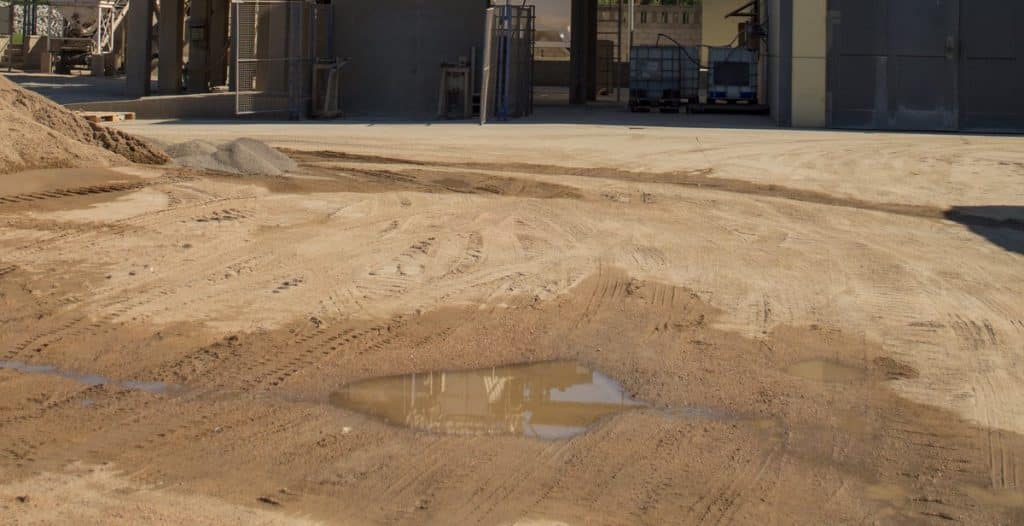The Fascinating History of Diamond Mining and Production
Diamonds have been coveted for their beauty and rarity for centuries, but their discovery and acquisition have been fraught with conflict and controversy. The history of diamond mining and production is a fascinating tale of exploration, exploitation, and innovation.
Early Diamond Mining
The first diamonds were found in India, where they were mined from alluvial deposits in riverbeds. The stones were highly valued for their beauty and were used primarily for decorative purposes. It wasn’t until the 18th century that diamonds began to be used for engagement rings and other jewelry.
As demand for diamonds grew, so did the search for new sources. In the 19th century, diamonds were discovered in South Africa, leading to a diamond rush that transformed the region.
The Rise of Industrial Diamond Mining
In the early 20th century, new technologies made it possible to mine diamonds on an industrial scale. This led to the creation of large-scale diamond mines in South Africa and other countries.
However, the diamond industry has also been plagued by controversy. Many diamond mines have been accused of human rights abuses and environmental destruction. In response, industry leaders have implemented measures to improve working conditions and reduce the environmental impact of diamond mining.
The Future of Diamond Mining
Despite these challenges, the diamond industry continues to thrive. New technologies and innovations are making it possible to mine diamonds more efficiently and sustainably. As demand for diamonds continues to grow, the industry is poised for further growth and development.
This article will explore the fascinating history of diamond mining and production, from its early origins to the present day. We will examine the key players, technologies, and controversies that have shaped the industry, and look ahead to the future of diamond mining and production.

Early Diamond Mining
Diamonds have been valued for their beauty and rarity for centuries. The history of diamond mining and production is a fascinating one, with early mining practices dating back to ancient India and the Golconda mines.
Ancient India and the Golconda Mines
Ancient India is believed to be the first civilization to mine diamonds, with the Golconda mines in present-day Andhra Pradesh, India, being the most famous of all. The Golconda mines were in operation from the 9th century AD until the 19th century AD, producing some of the world’s most famous diamonds.
The diamonds from the Golconda mines were highly prized for their quality and beauty. They were cut and polished in India and were traded throughout the world, with many of them finding their way into the treasuries of royalty and nobility.
Medieval African Diamond Trade
The diamond trade in medieval Africa was also an important part of the history of diamond mining and production. The diamonds were mined in the region that is now known as Sierra Leone and were traded along the trade routes that connected the West African coast with the rest of the world.
The diamonds from Africa were highly valued for their size and quality, and they were cut and polished in Europe. The diamond trade in Africa was controlled by powerful empires such as the Mali Empire and the Songhai Empire, who taxed the trade and used the revenue to fund their military campaigns.
| Key Points: |
|---|
| Ancient India was the first civilization to mine diamonds |
| The Golconda mines produced some of the world’s most famous diamonds |
| The diamond trade in medieval Africa was an important part of the history of diamond mining and production |
| The diamonds from Africa were highly valued for their size and quality |
As diamond mining and production continued to evolve, new technologies were developed, and new mines were discovered. Today, diamonds are mined in many parts of the world, with the largest producers being Russia, Botswana, Canada, and Australia.

Diamonds in the Modern Era
The discovery of diamonds in South Africa in the late 1800s revolutionized the diamond industry. Prior to this discovery, diamonds were found in scattered locations around the world, but the South African diamond fields were much larger and more accessible. This led to a massive increase in diamond production and made diamonds more affordable and accessible to the general public.
The Rise of De Beers
One of the most influential companies in the diamond industry is De Beers. Founded in 1888 by Cecil Rhodes, De Beers became the largest diamond mining and trading company in the world. The company’s dominance was based on its ability to control the supply of diamonds and maintain high prices through a process known as “diamond cartel.”
De Beers controlled every aspect of the diamond industry, including mining, sorting, cutting, and marketing. The company’s marketing campaigns, including the famous slogan “A Diamond is Forever,” helped to create the modern diamond culture and established diamonds as the ultimate symbol of love and commitment.
The Kimberley Process
In the late 1990s and early 2000s, concerns were raised about the link between diamonds and conflict in Africa. Rebel groups in countries such as Sierra Leone and Angola were using diamonds to fund their activities, leading to a phenomenon known as “blood diamonds” or “conflict diamonds.”
In response to these concerns, the diamond industry, governments, and non-governmental organizations came together to create the Kimberley Process Certification Scheme. This scheme was designed to prevent the trade in conflict diamonds by requiring that all diamonds be certified as conflict-free before they could be traded internationally.
| Benefits of the Kimberley Process | Challenges of the Kimberley Process |
|---|---|
|
|
Despite these challenges, the Kimberley Process has been successful in reducing the trade in conflict diamonds and improving the overall sustainability of the diamond industry.

Environmental and Social Impact of Diamond Mining
Diamond mining has a significant impact on the environment and the communities living near the mines. The process of diamond mining involves the removal of large amounts of soil and rock, which can lead to deforestation, soil erosion, and loss of biodiversity.
Ecological Impact
The ecological impact of diamond mining is severe. The removal of large areas of vegetation and topsoil can lead to soil erosion, which can cause landslides and other environmental disasters. The use of heavy machinery and explosives during the mining process can also lead to soil compaction and the destruction of habitats for wildlife.
Furthermore, diamond mining requires a significant amount of water, which can lead to water scarcity and pollution. The water used in the mining process can become contaminated with chemicals and other pollutants, which can have a detrimental effect on aquatic ecosystems and the communities that depend on them.
Another environmental impact of diamond mining is the release of greenhouse gases. The heavy machinery used in mining operations and the transportation of diamonds to market result in significant carbon emissions, contributing to climate change and global warming.
Social Impact
The social impact of diamond mining is also significant. Many diamond mines are located in developing countries, where mining companies can take advantage of lax labor laws and poor working conditions to maximize profits.
The mining industry has a reputation for exploiting workers, particularly children, who are forced to work in dangerous and hazardous conditions. The use of child labor in diamond mining is a significant concern, as it deprives children of their childhood and education, and exposes them to dangerous working conditions.
Moreover, diamond mining can lead to displacement of local communities, as mining companies acquire land for their operations. The loss of land can have a devastating effect on the livelihoods of local communities, particularly those who rely on agriculture and fishing for their income.
In addition, diamond mining can fuel conflict and human rights abuses. Diamonds have been used to finance armed conflicts in countries such as Angola, Sierra Leone, and the Democratic Republic of Congo. The profits from diamond mining have been used to purchase weapons and fund rebel groups, leading to the displacement of communities and widespread human rights abuses.
Conclusion
The environmental and social impact of diamond mining cannot be ignored. While the diamond industry has taken steps to address these issues, much more needs to be done to ensure that diamond mining is sustainable and responsible.

The Future of Diamond Mining
The diamond mining industry is constantly evolving as new technologies and sustainable practices are being developed to improve efficiency and reduce environmental impact. Here are some of the key trends that are shaping the future of diamond mining:
New Technologies
New technologies are revolutionizing diamond mining, making it safer, more efficient, and more environmentally friendly. One of the most exciting developments is the use of autonomous mining equipment, such as drones and robots, which can operate in dangerous or hard-to-reach areas without risking human lives. These technologies also allow for more precise and targeted mining, reducing waste and maximizing the recovery of high-quality diamonds.
Sustainable Practices
The diamond industry is also focusing on sustainable practices to minimize its impact on the environment and local communities. This includes responsible mining practices that prioritize the health and safety of workers, as well as the protection of local ecosystems and wildlife. Additionally, diamond companies are investing in renewable energy and reducing their carbon footprint to promote a more sustainable future.
- Recycling of water to reduce water usage
- Rehabilitation of land used for mining to reduce environmental impact
- Use of renewable energy sources such as solar and wind energy
- Investment in research and development of sustainable mining practices
Conclusion
As the diamond mining industry continues to evolve, it is clear that new technologies and sustainable practices will play a key role in shaping its future. By embracing these developments, diamond companies can not only improve their bottom line but also contribute to a more sustainable and responsible mining industry.

